Writing this thread on my Mac Mini because my 8 year old Mac Pro 4,1 (single CPU) is now out of order.
My Mac Pro shows red LED DSI510 and is not starting anymore. No chime, but fans running, GPU and hard disks are powered.
According to this manual (picture on page 32) https://www.manualslib.com/manual/889501/Apple-Mac-Pro.html?page=32 the LED DSI510 is for CPU A (W3690 installed).
![IMG_1159.JPG IMG_1159.JPG]()
![IMG_1160.JPG IMG_1160.JPG]()
Update:
Uninstalled the CPU cooler and surprise, there is one broken Northbridge Heatsink rivet:
![IMG_1162.JPG IMG_1162.JPG]()
![IMG_1164.JPG IMG_1164.JPG]()
Thanks to Mac Pro forum I'm prepared, got already heatsink rivets... Especially useful is this thread:https://forums.macrumors.com/thread...at-sink-on-2009-mac-pro-2x2-26.1637891/page-3
![IMG_1165.JPG IMG_1165.JPG]()
Update:
Ok, installed new heatsink rivets, cleaned everything incl. Northbridge chip and CPU, reapplied thermal paste on both, and Mac Pro is running again without the red LED.
I cannot emphasise enough that Mac Pro 4,1/5,1 owners should be prepared for this event in advance; Northbridge Heatsink rivets will break with a high degree of probability, it is only a question of time! In my case it happened sudden without warning (I have iStat menus installed), after 8 years with a Mac Pro 4,1 that never encountered any shocks etc.
By the way: This time I reapplied Cooler Master MasterGel Maker, it's much better than the Arctic Silver 5 i applied before: CPU now 40°C instead of 47°C (idle), and Northbridge (I/O Hub Tdiode) now 59°C instead of 75°C.
![IMG_1171.JPG IMG_1171.JPG]()
![IMG_1173.JPG IMG_1173.JPG]()
![Temperature.png Temperature.png]()
My Mac Pro shows red LED DSI510 and is not starting anymore. No chime, but fans running, GPU and hard disks are powered.
According to this manual (picture on page 32) https://www.manualslib.com/manual/889501/Apple-Mac-Pro.html?page=32 the LED DSI510 is for CPU A (W3690 installed).
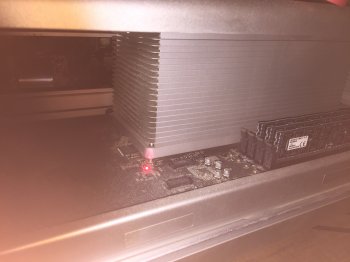
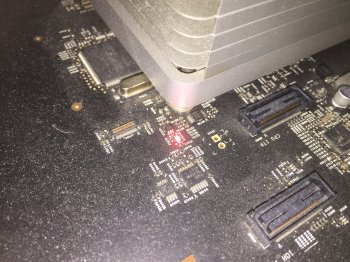
Update:
Uninstalled the CPU cooler and surprise, there is one broken Northbridge Heatsink rivet:
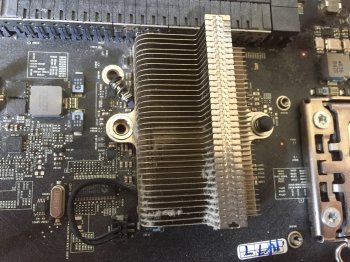

Thanks to Mac Pro forum I'm prepared, got already heatsink rivets... Especially useful is this thread:https://forums.macrumors.com/thread...at-sink-on-2009-mac-pro-2x2-26.1637891/page-3

Update:
Ok, installed new heatsink rivets, cleaned everything incl. Northbridge chip and CPU, reapplied thermal paste on both, and Mac Pro is running again without the red LED.
I cannot emphasise enough that Mac Pro 4,1/5,1 owners should be prepared for this event in advance; Northbridge Heatsink rivets will break with a high degree of probability, it is only a question of time! In my case it happened sudden without warning (I have iStat menus installed), after 8 years with a Mac Pro 4,1 that never encountered any shocks etc.
By the way: This time I reapplied Cooler Master MasterGel Maker, it's much better than the Arctic Silver 5 i applied before: CPU now 40°C instead of 47°C (idle), and Northbridge (I/O Hub Tdiode) now 59°C instead of 75°C.

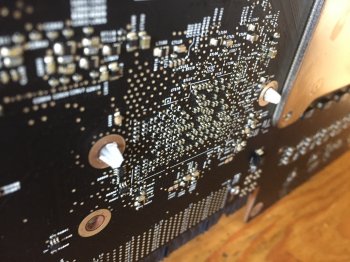
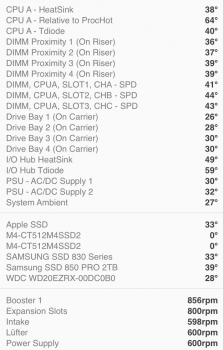
Last edited:

